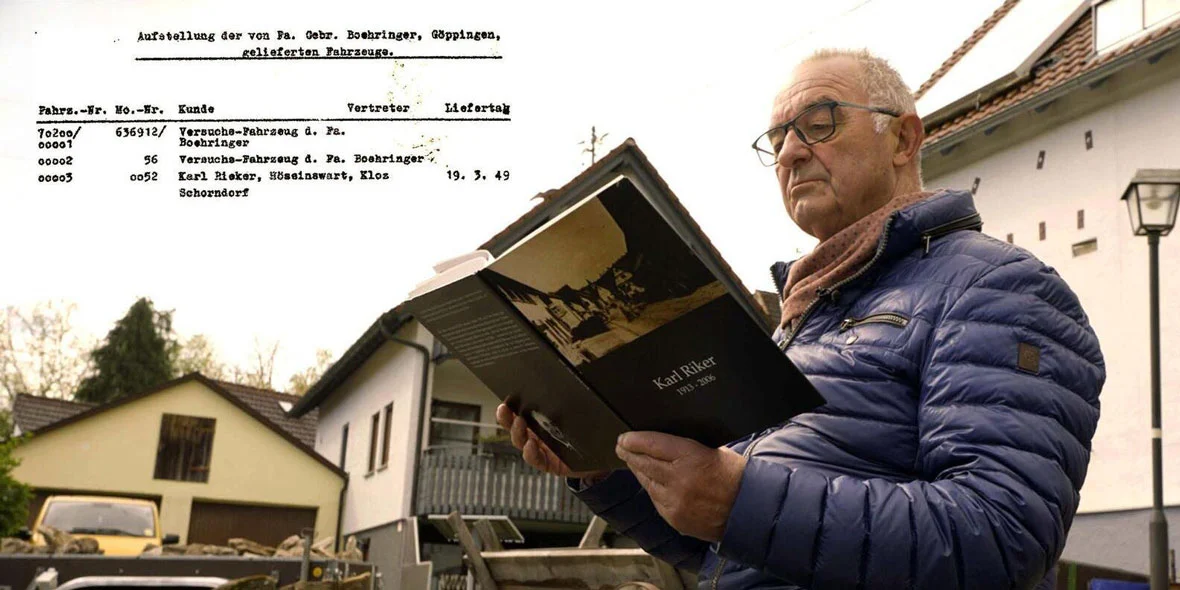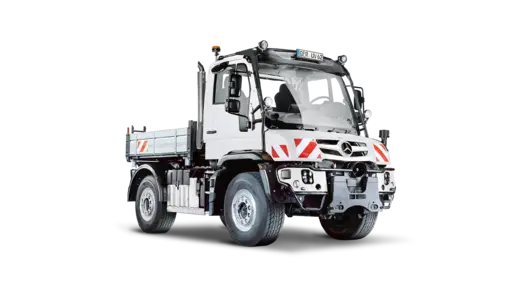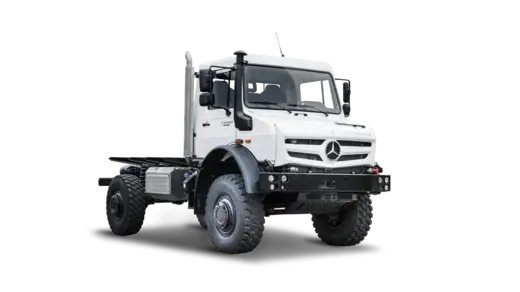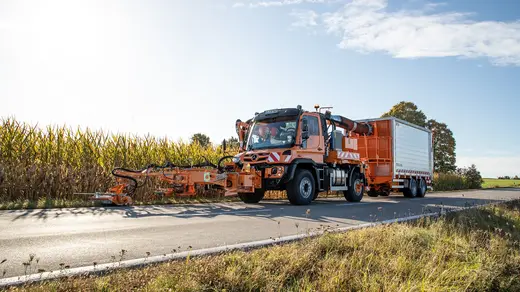How the first Unimog changed lives and made history.
A car would have been extraordinary, making a universal motorized vehicle all the more special. Karl Riker, a World War veteran and schnapps distiller from Hößlinswart in the Rems-Murr district of south west Germany, received the first series-produced Unimog on 19 March 1949. A vehicle that shaped the whole family.
Popular and robust.
Rolf Riker, son of Karl Riker, remembers one of his first trips most particularly. He was on the road in the Unimog, with his brother, loaded up with fresh hay one sunny afternoon. Suddenly everything started to move very quickly: the slope became steeper, the wheels began to slip and, a moment later, they had landed in the ditch. “It was our fault, we couldn't find the handbrake,” says Rolf Riker with a laugh today. It's good that the robust Unimog can easily handle something like that.
Growing up with the Unimog was a big thing for us children.
Rolf Riker, contemporary witness, son of Karl Riker
A machine that connects.
For the Riker children, the Unimog was more than just a vehicle, explains Rolf Riker. That accident when out fetching hay was just one of many adventures that the brothers experienced with the all-rounder. "Even when we landed in that ditch, the Unimog remained intact and we learned our lesson. Growing up with the Unimog was a big thing for us."




